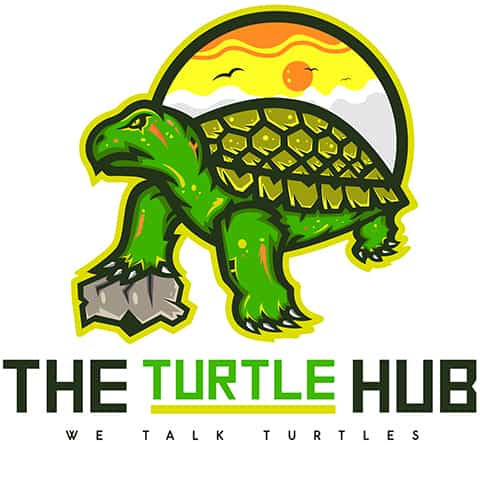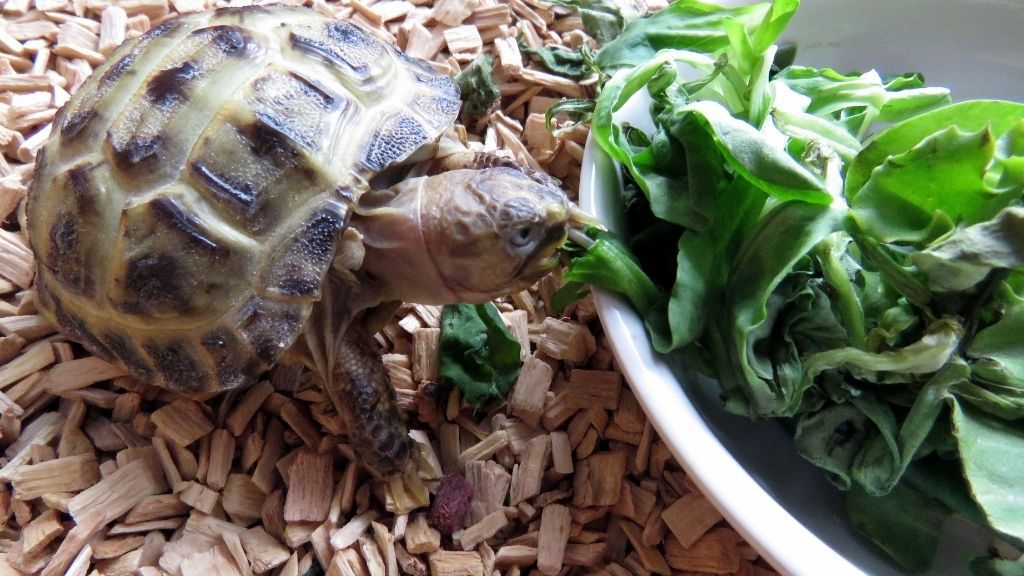Tags:
How Do Turtles Digest Their Food?


fact checked & review by
Dr. Partho Kumar Shaha
Veterinarian (DVM)
The information is current and up-to-date in accordance with the latest veterinarian research.
I still do not understand how keepers can be so damn careless about the turtle’s digestive system! They offer these pets whatever is coming to their mind.
Turtles can barely differentiate between good and bad food. In the end, they have an upset stomach.
Turtles use their jaws to churn the food, which travels to the stomach. There, the meal breaks down into chunks due to gastric acid. The remains pass through the intestines and finally come out through the anus. In each stage, the digestive tract extracts as much nutrients as possible.
You get the gist. Right? Now, let’s get into the details.
read all our guides on Turtle dietary pattern & metabolism!
Key Takeaways
- Turtles have a slow but similar digestive process, just like any other animal.
- It takes 2.5 to 3 days for a turtle to digest protein matter.
- Turtles are lactose intolerant and can suffer from diarrhea, constipation, or such digestion issues.
Here Is How A Turtle’s Digestion Process Works
A turtle’s digestion process is nothing different from that of humans. The consumed food gets broken down in the tummy, which gives energy. As the meal travels further, it loses the nutrient percentage.
So, the remaining is nothing more than waste, and turtles poop them out.
Take a peek at the details below.
The Digestion Process Starts with Chewing
Of course, the first step of digestion begins with churning the meals in the mouth. But wait a second. Turtles have no teeth. How do they chew?
See, turtles are not always toothless. In fact, these reptiles own egg teeth, which they use to crack down the eggshell and come out. But this unique addition falls off within a few months.
Not having teeth has never been a problem for turtles. They have tongues and beaks that help them crush the prey and grind them in their mouth.
Have you ever seen a ball mill or jaw crusher? Turtles use the same principle. The pets use the upper and lower jaws to create extensive pressure on a single point. As a result, the meals get converted into bite-size pieces.
N.B. Lipped turtles (e.g., soft shell turtles) do not own a sharp beak. But it does not hamper their digestion process. The pets will suck the prey and swallow it using tongue muscles if necessary.
Tongue Provides A Great Help To Swallow Meals
Just like humans, turtles have saliva glands that salivate inside their mouths. So, the churned meals soften and get mushier because of the saliva. As the food gets squishy, turtles use their tongue to push the food in the rear. That way, the reptiles can now swallow the chunks easily.
The Road to The Stomach
Right after turtles swallow the mushy me, it will travel to the stomach, passing the esophagus. Biologically, the tummy of these creatures is divided into 2 sectors:
- Cranial Fundic region and
- Caudal Pyloric region.
No, no! Turtles do not have 2 tummies. But the single stomach is separated with a wall lining. Also, each region is assigned to do a distinct job.
For example, the fundus stores gas as the chunks break into more pieces. The gastric acid secretion from the stomach walls leads to this breakdown.
Thanks to this setup! The turtle can now extract a high percentage of nutrients from the food. Once the extraction is complete, the leftovers are passed to the small intestine through the Pyloric sphincter.
Small Intestine Breaks Down The Nutrients
Let’s not get into the boring biology of the small intestine. Yes, it is divided into 3 parts,
- Duodenum
- Jujenum, and
- Ileum.
The primary function of these separate regions is simple,
- Pass the food and
- Absorb nutrients.
In the stomach, the mushy chunks already experience some sort of grinding. When into the small intestine, liver bile and pancreas enzymes assist in further breakdown. Ileum villas, the finger-like lining, absorb the freshly extracted nutrition and release it in the bloodstream.
Right now, the turtle’s system has received the necessary nutrition it requires to stay functional. The remaining churns travel to the large intestine, passing through the caecum. There the system gets prepared for surplus nutrients and poops or urinates.
Large Intestine Receives Bonus Nutrients
I have already mentioned that the nutrition percentage will drop as the meals travel through the digestive tract. When the undigested food hits the large intestine, it still offers some extra nutrition.
Acetate, N-butyrate, and Propionate-like short-chained fatty acids squeeze out the remaining minerals and vitamin content in the meal in this stage.
Cloaca Is Not The End
Many keepers have a misconception that turtles poop through the cloaca. No! The cloaca is indeed an important body part. Turtles use it for mating. Also, you can determine the genders of the pets observing the cloaca.
Before getting out of the system through the anus, the undigested leftover will pass the cloaca.
How Long Does It Take for A Turtle to Digest Food?
Turtles are known for their slow digestion system. Many academics claim that the species takes more or less 3 weeks to digest one meal. Well, I doubt this statement.
In one research paper, the scientists have shown that turtles will extract the nutrients and release the remaining in 2.5 to 3 days.
What happens in the gut in these couple of days? I have already discussed the process earlier. Turtles will assign microbes to glean more nutrition from the plant and protein matters. They absorb the nutrients through their intestine membranes.
As turtles have a slow digestion system, they do not require food every day. Even if you offer them meals daily, be very strict with the quantity. Otherwise, you might end up overfeeding the creatures.
Can Turtles Digest Cellulose?
Apparently, the freshwater turtles can not process cellulose as they lack cellulase. This enzyme plays a key role in breaking down the cellulose from plants. But does it mean turtles can not extract nutrients from veggies and leaves?
No! Turtles have adopted an entirely different technique to process cellulose. They deploy hindgut fermentation to digest cellulose. Young turtles tend to practice coprophagy (poop eating) to develop microbes that help in breaking down cellulose.
Sea turtles, specifically green sea turtles, live on seaweeds and grass. Hence, they have developed a gut structure that supports microbial fermentation. The microbial symbiont produces enzymes (cellulase) that can break down cellulose.
As a result, marine turtles do not struggle to cope with a fiber-rich diet. However, the plants include more water content than usual. Thus, these creatures have to adapt to high water adsorption.
Can Turtles Digest Milk?
Of course not! Turtles are lactose intolerant. They lack the enzymes to break down dairy products like milk, cheese, etc. Turtles neither lactate nor drink milk.
Turtles Suffer from Digestion Issues
Well, digestion problems are also common in turtles. These cuties will also suffer from constipation or diarrhea-like issues if the meals are poorly planned. Catch a brief discussion below.
Diarrhea:
I think turtles suffer from diarrhea more frequently than you can imagine.
A high-sugar diet or an inappropriate item in the meal will upset their tummy.
Avoid feeding your turtles too much sweet fruits. Also, always check the nutritional value of the meal before offering them.
Constipation:
Dehydration and low fiber diet are the main reasons for constipation in turtles. Turtles can not really poop in this condition, and straining often leads to prolapses.
Add more fiber to the turtle meals and give them a lukewarm bath. These will help him release the feces.
Compaction:
Sometimes, turtles ingest inedible items like sand or plastic. As their guts can not break down these items, those remain in the intestine, blocking the gut. Therefore, turtles can not poop out those objects, and they might require surgery.
Before You Go
I understand if you have questions about turtle poop and health. You will find the answers to the frequently asked questions in the attached article. If you have more questions, feel free to shoot. I will definitely get back to you.
How Do Turtles Poop? [FAQs Answered]

About Author
Muntaseer Rahman started keeping pet turtles back in 2013. He also owns the largest Turtle & Tortoise Facebook community in Bangladesh. These days he is mostly active on Facebook.
Disclaimer
This site is owned and operated by Muntaseer Rahman. TheTurtleHub.com is a participant in the Amazon Services LLC Associates Program, an affiliate advertising program designed to provide a means for sites to earn advertising fees by advertising and linking to Amazon.com. This site also participates in other affiliate programs and is compensated for referring traffic and business to these companies.








